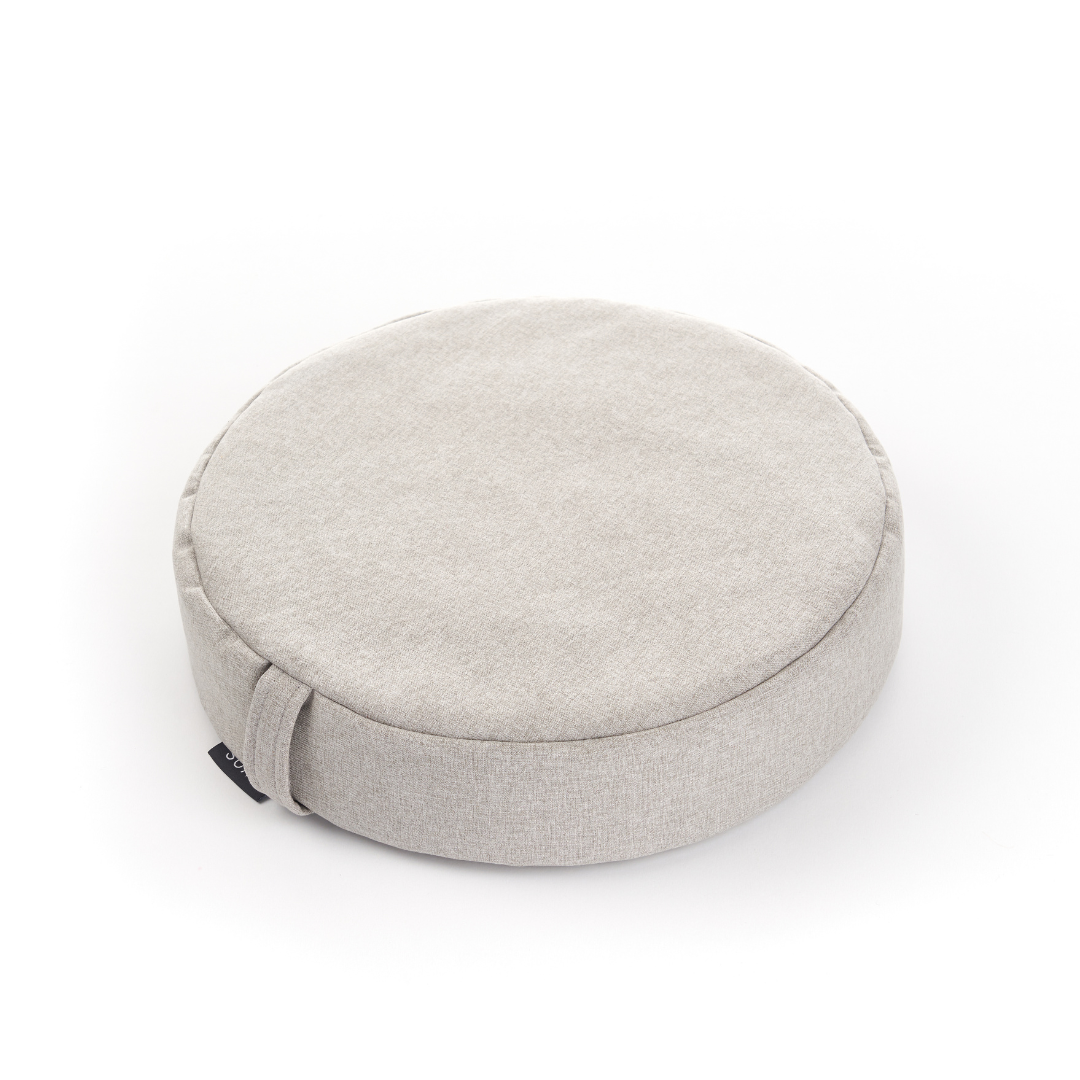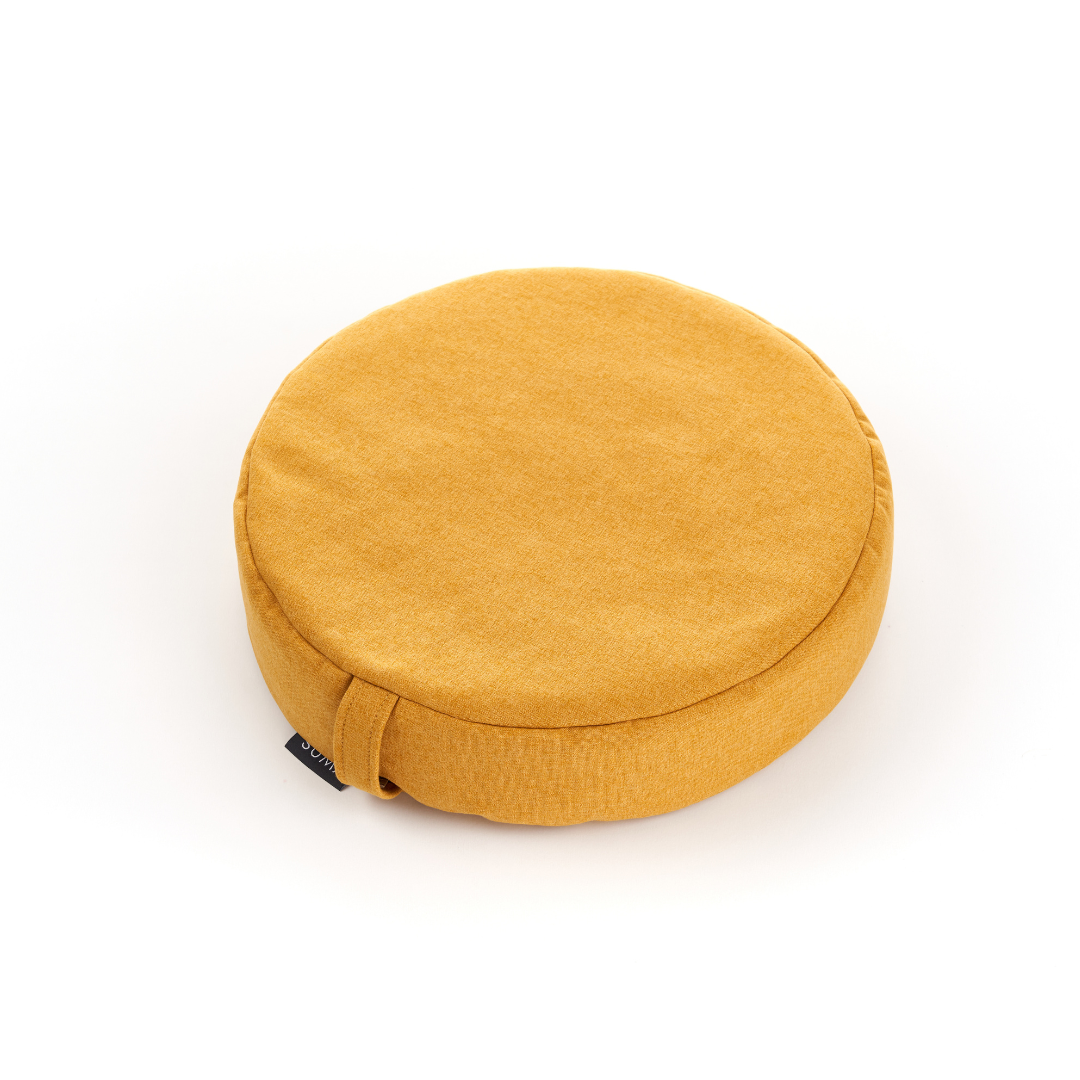We all have goals and dreams that we want to achieve in life. Whether learning a new skill, improving our health, or advancing our career, success requires consistent effort and dedication.
But sometimes, we struggle to maintain the motivation, tools, and discipline needed to progress. We fall into bad habits that sabotage our efforts and frustrate and discourage us. Happens to all of us every once in a while.
However, habits are incredibly powerful because we do them almost automatically, without thinking, every day. According to a study by the American Psychological Association, about 43% of daily activities are done habitually.
They shape our character, relationships, health outcomes, and more. But how do we build good habits and make them stick? How do we overcome the challenges and temptations we face along the way?
This guide will help you build wholesome habits and explore ways to create lasting change.
What are habits anyway?
Habits are the behaviors and small actions you perform repeatedly daily without conscious thought. These almost automatic responses are formed gradually in response to specific cues or triggers. The good news is that we can deliberately and systematically change them.
Some habits are good as they positively impact your physical and mental well-being and contribute towards your personal growth, such as maintaining a healthy diet, exercising regularly, and practicing mindfulness.
Conversely, bad habits like excessive screen time, smoking, drugs, and unhealthy eating can lead to unwanted consequences. Breaking a habitual pattern can be challenging, but it is possible. With constant effort and dedication, you can eradicate bad habits that no longer serve your best interests
 What about our willpower?
What about our willpower?
Many people like to believe they can do anything with sufficient willpower. That may be true for some isolated moments, but willpower isn't a bottomless well, and it's not reliable for sustained behavior change for most of us.
It is no coincidence that the world's top performers in every field – athletes, politicians, business leaders, artists – all carefully design their environment to maximize their chances of success. For instance, media mogul Oprah Winfrey starts each day with meditation, a practice scientifically shown to reduce stress and improve focus. This routine helps her maintain composure and mental clarity in her demanding world. Likewise, Bill Gates, co-founder of Microsoft, famously scheduled "Think Weeks" – secluded retreats for focused reading and brainstorming, away from the constant ping-pong of emails and meetings.
Why do these high achievers prioritize environmental design? Because they all understand that our willpower fluctuates. When the weather is terrible, the people around us are negative, or we're simply having an off day, we might not have the willpower to push through with our planned tasks. We are naturally susceptible to the cues and influences in our environment, and thus, our willpower reserves can easily get depleted.
People we consider top achievers want to ensure they can follow through with their habits regardless of the environment or their mood. For example, a friend training for an ultramarathon strategically placed his running shoes right beside his bed, replacing his comfy slippers. So, the first thing he saw each morning was a visual trigger for his running habit. This simple environmental tweak helped him stay on track with his daily training goal. Eventually, he achieved his incredible objective of finishing a 100km race.
Similarly to most people, he probably hated running when he first started. But by consistently showing up and putting in the effort, he started reaping the rewards – better health, improved mood, and increased productivity. Over time, running transformed from a willpower-dependent chore into an automatic habit. Habits, once ingrained, become almost effortless, freeing up our precious willpower for when we truly need it. In essence, habits eat willpower for breakfast.
Understanding the psychology of habits
Charles Duhigg introduced the concept of the habit loop in his book "The Power of Habit." He explained that the process of habit formation in the human brain is called the habit loop.
It is a neurological sequence that provides insights into the formation, execution, and reinforcement of habits in the brain.
The habit loop is divided into three simple stages: cue, reward, and routine.
Let's break down these fundamental stages to understand how to change and develop new habits.
Stage 1: Cue
A cue is something that triggers your brain to start a habit. It can be anything you see, hear, smell, feel, or think. For example, some common cues are:
- Location: You always brush your teeth in the bathroom.
- Time: You always check your email at 9 a.m.
- Person: You and your coworker always have insightful discussions during lunch.
- Object: You always see your meditation cushion in your living room in the morning.
- Emotion: You always eat chocolate when you feel stressed.
Stage 2: Routine
A routine is the central element of the habit loop, which refers to the actual behavior or action that is taken in response to the cue. Typically, it is an automatic response that follows the recognition of the cue.
Continuous repetition of a particular routine strengthens the neural pathways in the brain, making the habit more automatic over time.
Your routine towards a cue can be positive or negative, depending on the nature of your habit.
Routines to the above cues:
- Brushing your teeth: You pick up your toothbrush and toothpaste and start brushing your teeth.
- Checking your email: You open your laptop, log in to your email account, and start reading your messages.
- Talking with your coworker: You join your coworker at the cafeteria and discuss your problems.
- Meditation cushion: You sit on your meditation cushion and meditate first thing in the morning.
- Eating chocolate: You open your drawer, take out a chocolate bar, and start eating it.
Stage 3: Reward
A reward is the final stage of the habit loop that follows the completion of a routine. It acts as a crucial step by reinforcing the routines, making them more likely to be repeated.
A reward gives a sense of pleasure, satisfaction, and accomplishment. For instance, getting a promotion brings a sense of contentment and motivates you to work hard in the future.
Similarly, a reward teaches us whether a particular habit is worth remembering. If a particular behavior breaks the feelings of disappointment, your brain will recognize it as useless.
Rewards of the above responses:
- Brushing your teeth: You feel fresh, clean, and confident.
- Checking your email: You feel informed, productive, and organized.
- Talking with your coworker: You feel heard, connected, and relaxed.
- Meditation cushion: After “cleaning” your mind from nighttime dreams, you feel calm, relaxed, and focused to start your day. You record one session on a habit-tracking app.
- Eating chocolate: You feel happy, energized, and comforted.
How To Develop Good Habits?
Following are some of the tips to develop positive habits:
1. Identify keystone habits and set goals
A keystone habit is a habit that positively impacts other areas of your life. For example, meditating regularly can improve your mental health, focus, creativity, and self-awareness.
By identifying and focusing on your keystone habits, you can create a domino effect that leads to more positive changes in your life. To identify your keystone habits, think about what you consider ‘good habits.’
To identify your keystone habits, you can use the following questions:
- What are the habits that, if I did them every day, would have the most positive impact on my life?
- What habits produce several positive outcomes in different areas of my life?
- What are the habits that I’m already doing or interested in?
- What are the habits that make other habits easier?
Once you have a list of potential keystone habits, you can rank them based on their importance, feasibility, and desirability. Then, you can choose one or two habits to focus on and set SMART goals for them.
SMART stands for Specific, Measurable, Achievable, Relevant, and Time-bound.
For example, a SMART exercise goal could be: “I will meditate for 15 minutes every morning using my meditation cushion to improve my mental health, increase happiness and productivity.”
2. Strengthen your habit-building muscle
While willpower can be helpful, building strong habits is a more sustainable approach to achieving your goals. Habits become ingrained routines that require less conscious effort, making them less reliant on fleeting willpower.
Here are some strategies to develop powerful habits:
- Make your habits easy and enjoyable. You can make your habits easy by reducing the number of steps, the amount of time, or the level of difficulty required to do them. You can make your habits enjoyable by adding a reward, a positive affirmation, or a social element.
- Use the power of habit stacking. Habit stacking is a technique where you link a new habit to an existing habit that you already do regularly. For example, if you want to meditate every morning, you can stack it on top of your habit of brushing your teeth. This way, you create a clear cue for your new habit and reduce the need for willpower. You can use the formula: “After [current habit], I will [new habit].”
- Plan for obstacles and temptations. Expect bumps in the road or things that might throw you off track with your habits. Use if-then planning to prepare responses in advance. You can use the formula: “If [situation], then I will [action].” For example, “If I feel like skipping my workout, I will remind myself of my goal and do at least 10 minutes of exercise.”
3. Create a consistent routine
Following the same routine, every time signals your brain to prioritize the particular behavior sequence as part of your routine. So, pick a habit, create a conscious routine, And repeat this daily so that the behavior becomes more automatic over time. For instance, if you want to make morning exercise a part of your routine, consider making certain changes, like setting out workout clothes the night before, choosing a consistent time every day, designating a workout space, and reflecting on your progress to acknowledge your efforts.
To create a consistent routine, you can use the following steps:
- Choose a time and a location for your habit. The more specific you are about when and where you will perform your habit, the more likely you are to follow through. You can use the strategy of implementation intentions, where you state your intention to perform a certain behavior at a certain time and place. For example, you can use the formula: “I will [habit] at [time] in [location].”
- Use cues and triggers to start your habit. A cue is anything that reminds you to start your habit, such as a time, a place, an event, an object, or a person. A trigger is a cue strongly associated with your habit, such as a phone alarm, calendar notification, sticky note, or habit tracker. You can use cues and triggers to initiate your habit and make it a part of your routine. For example, if you want to read more books, you can use a cue like placing a book on your bedside table and a trigger like setting a reminder on your phone to read before bed.
- Repeat your habit every day until it becomes automatic. The more you repeat your habit, the more it becomes ingrained in your brain and part of your routine. The key is to be consistent and not miss a day, especially in the beginning. You can use the strategy of the 21/90 rule, which states that it takes 21 days to form a habit and 90 days to make it a lifestyle. Of course, the exact time may vary depending on the habit and the person, but the idea is to stick with your habit long enough until it becomes second nature.
4. Make it easy for you to do
Environmental changes can act as a driving force and a trigger for specific habits. It lowers the activation energy, making the behavior more accessible and convenient. Adding changes in your surroundings based on your habits eliminates negative behavior and facilitates consistency. A well-designed environment aligning with your goals is a source of motivation and reinforces your commitment. For instance, you can place the items associated with your habit in visible locations for constant reminders.
To optimize your environment, you can use the following tips:
- Make your good habits obvious and your bad habits invisible. The more visible and accessible a habit is, the more likely you are to do it. The more hidden and inconvenient a habit is, the less likely you are to do it. You can design your environment to make the cues of your good habits stand out, and the cues of your bad habits fade away. For example, if you want to drink more water, you can fill a water bottle and place it on your desk. If you want to watch less TV, you can unplug it and put it in a closet.
- Make your good habits attractive and your bad habits unattractive. The more appealing and rewarding a habit is, the more likely you are to do it. The more unpleasant and costly a habit is, the less likely you are to do it. You can use the strategy of temptation bundling, where you pair a habit you want to do with a habit you need to do. For example, if you want to listen to your favorite podcast, you can only do it while you exercise. If you want to eat a piece of chocolate, you can only do it after you finish your work.
- Make your good habits easy and your bad habits hard. The more simple and convenient a habit is, the more likely you are to do it. The more complex and difficult a habit is, the less likely you are to do it. You can use the strategy of the two-minute rule, where you start with a habit that takes less than two minutes to do and then gradually build on it. For example, if you want to read more books, you can start by reading one page per day. If you want to meditate more, you can take a deep breath daily.
5. Utilize positive reinforcement
Positive reinforcement is a technique that rewards positive behaviors and encourages their repetition. By using positive reinforcement, you can increase your motivation, self-esteem, and satisfaction with your habits.
To utilize positive reinforcement, you can use the following tips:
- Identify the behaviors you want to reinforce and the rewards you find meaningful and enjoyable. The rewards can be tangible (such as money, gifts, or food) or intangible (such as praise, recognition, or gratitude). Make sure the rewards are appropriate for the behaviors and consistent with your goals.
- Deliver the rewards as soon as possible after the behaviors. This will create a strong association between the behaviors and the rewards and increase the likelihood of repeating them. If the rewards are delayed, they may lose their effectiveness or be overshadowed by other factors.
- Vary the rewards and make them unpredictable. This will prevent boredom and habituation and keep you interested and curious. For example, you can use a random reward generator or a reward jar to choose a different reward each time you complete a habit.
- Use positive language and affirmations to reinforce your behaviors. You can use statements such as “I did a great job today” or “I’m proud of myself for sticking to my habit.” You can also use positive self-talk to overcome challenges and setbacks and remind yourself of the reasons for and benefits of following your habits.
- Surround yourself with positive people who share your goals and values. They can provide social reinforcement, such as feedback, encouragement, support, and accountability. You can also join a group or a community of like-minded people who can inspire you and celebrate your achievements.

How Long Does It Take To Develop Good Habits?
Developing good habits may require more effort as their reward is delayed. When you constantly fail at habit formation, it impacts your confidence. However, if you stick to a particular approach, you can succeed in changing your behavior.
Phillippa Lally et al. (2009) conducted a study at University College London, UK, to investigate the process of habit development in daily life. The research involved 96 volunteers who chose a daily eating, drinking, or other activity behavior to practice consistently for 12 weeks (84 days).
The researchers used the daily self-report habit index (SRHI) to record the changes in the individual's behavior. According to the findings, repeating behavior constantly leads to an increase in automaticity. On average, the time required by the participants to reach 95% of their automatic limit ranged from 18 to 254 days.
Similarly, Jan Keller et al. (2021) conducted a randomized control trial at the Department of Education and Psychology, Freie Universität Berlin, Berlin, Germany, to determine habit formation. The researchers used 192 participants, aged 18 to 77 years, randomly assigned to either a routine or a time-based cue. The participants in both groups selected an everyday nutrition behavior and linked it to a specific routine or time. The results suggested that participants successfully formed habits in the median of 59 days.
The studies indicate varied durations for habit development, depending on the habit and individual lifestyle factors. Everyone can change their habits; for some, it may just take longer. Regular practice is key—like training a muscle, it strengthens over time and can become a lifelong superpower.
Takeaway
Good habits are essential for achieving personal goals and enhancing overall well-being. The process involves understanding the psychology of habits, including the habit loop of cue, routine, and reward. To successfully build good habits, one should focus on identifying keystone habits, setting clear goals, strengthening habit muscle, creating a consistent routine, optimizing the environment, and utilizing positive reinforcement.










Leave a comment
All comments are moderated before being published.
This site is protected by hCaptcha and the hCaptcha Privacy Policy and Terms of Service apply.